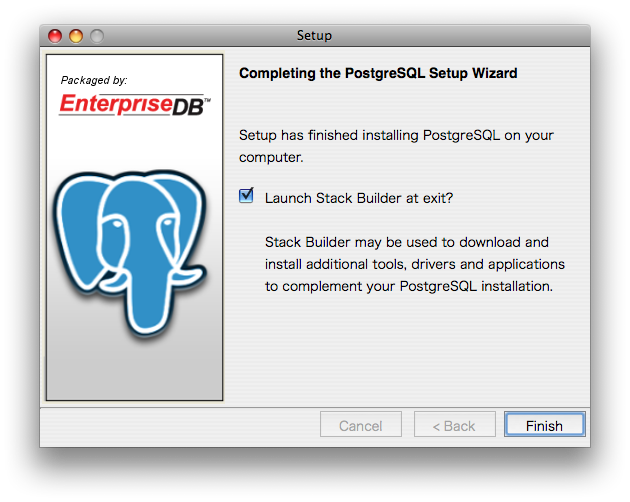
Organization – Have you ever opened your own GIS project, and started crying when you look at the mess of temporary layers that were created in the pursuit of that one perfect map? I can often run a set of several steps with either a single SQL query or SQL script. This saves me time, helps keep me organized and makes it easier to re-run tasks.Less limitations – But what if your data doesn’t fit into the 2GB limit of a shapefile, or the the process is too slow or never finishes in your GIS? Modern databases like Postgres are designed to deal with large datasets, and process millions of records much faster than a traditional GIS, or even scripts with Python or R.Freedom – speaking of buttons, what if you need to accomplish something across several different layers that isn’t supported by a GUI option? With SQL you get freedom to stitch together the analysis you need.

This can also help automate repetitive tasks and skips laborious menus and forms.
#INSTALL POSTGRESQL FOR MAC UPDATE#
Need to redo the analysis and tweak a few things? Update the code and run it again.

“But I already use GIS why would I bother with a database.”įor those not already convinced that they need a database to do GIS work, here are my top 4 reasons to start using one: But when you add the spatial SQL support that comes with the PostGIS extension, there truly is nothing else out there like it (at least not for free). It’s billed as the “world’s most advanced open source relational database”, and with its comprehensive adherence to SQL standards compliance, it’s easy to see why users love it. PostgreSql is already the second most loved database according to the 2018 StackOverflow survey and it’s the fastest growing in popularity.


 0 kommentar(er)
0 kommentar(er)
